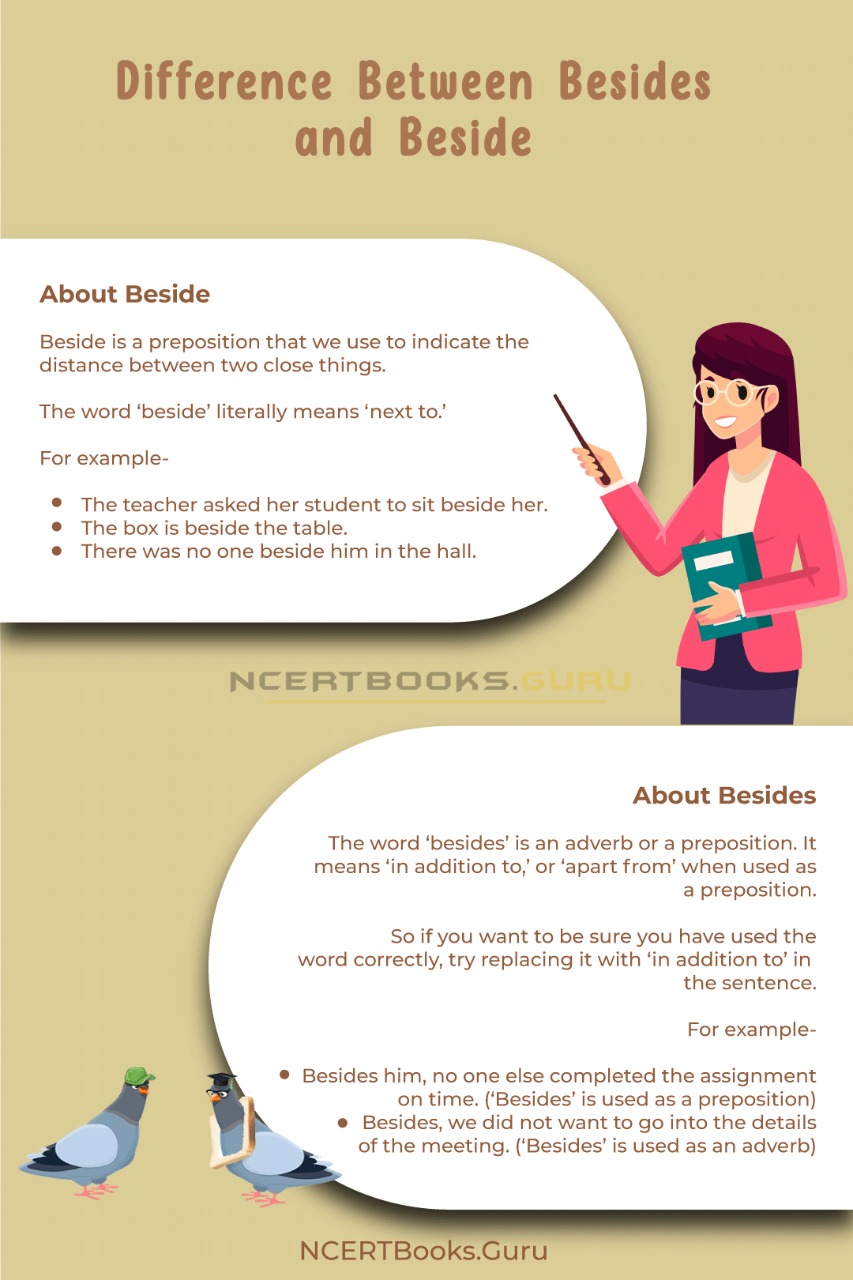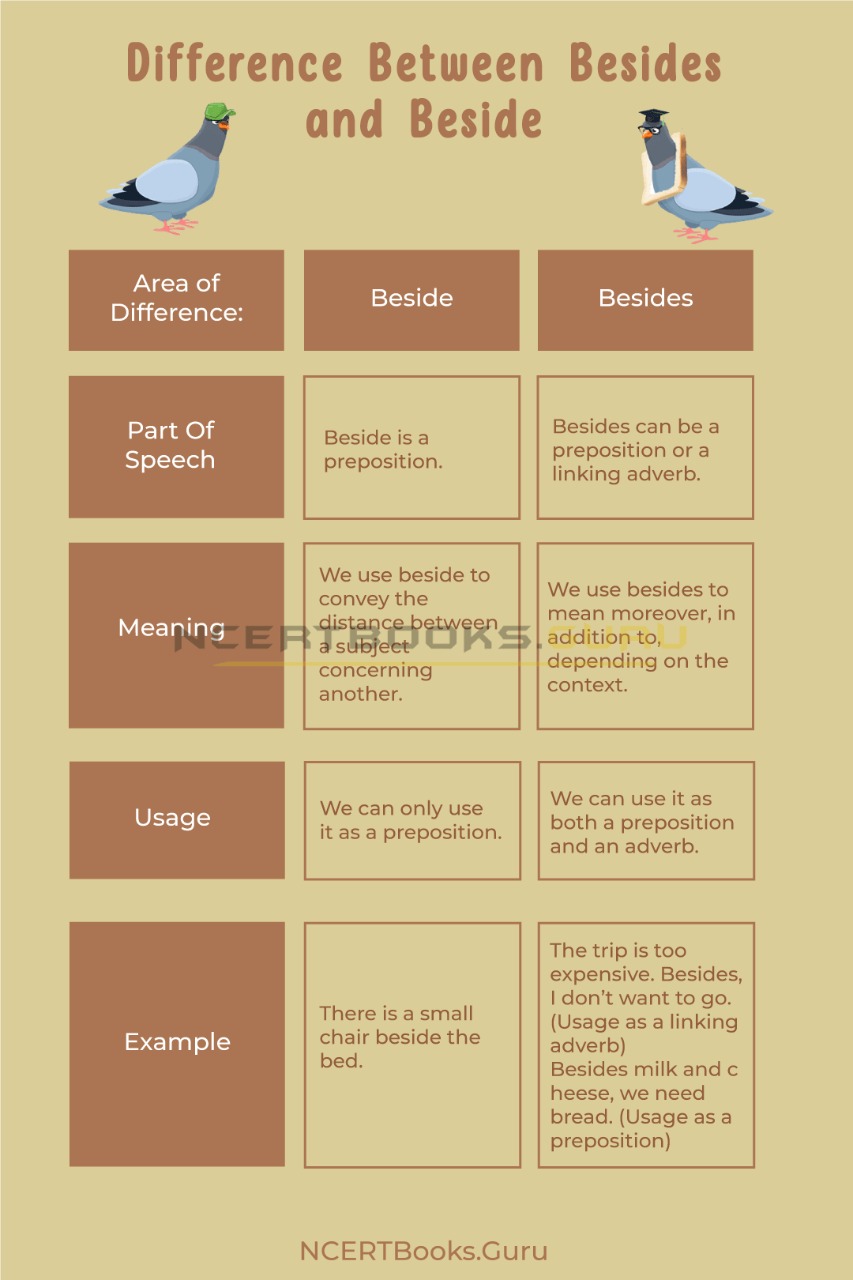Introduction
The English Language can be pretty confusing. Many words, though, have similar spellings, can mean two separate things.
Most non-native speakers might think of them as being the same word, or having the same meanings, and that they can be interchanged. We will highlight a few differences between them so that you don’t make the mistake of interchanging them again.
You can also find differences between articles on various topics that you need to know. Just tap on the quick link available and get to know the basic differences between them.
What is the Difference Between Besides and Beside?
About Beside
Beside is a preposition that we use to indicate the distance between two close things. The word ‘beside’ literally means ‘next to.’ So if you think you are making a mistake or are confused if you have used the word correctly, you can replace it with ‘next to’ and see if it makes sense.
For example-
- The teacher asked her student to sit beside her.
- The box is beside the table.
- There was no one beside him in the hall.
About Besides
The word ‘besides’ is an adverb or a preposition. It means ‘in addition to,’ or ‘apart from’ when used as a preposition. So if you want to be sure you have used the word correctly, try replacing it with ‘in addition to’ in the sentence.
When we use besides as an adverb, we mean ‘as well as’ or ‘furthermore’.
For example-
- Besides him, no one else completed the assignment on time. (‘Besides’ is used as a preposition)
- Besides, we did not want to go into the details of the meeting. (‘Besides’ is used as an adverb)

Difference Between Beside and Besides
| Area Of Differentiation | Beside | Besides |
| Part Of Speech | Beside is a preposition. | Besides can be a preposition or a linking adverb. |
| Meaning | We use beside to convey the distance between a subject concerning another. | We use besides to mean moreover, in addition to, depending on the context. |
| Usage | We can only use it as a preposition. | We can use it as both a preposition and an adverb. |
| Example | There is a small chair beside the bed. | The trip is too expensive. Besides, I don’t want to go. (Usage as a linking adverb)
Besides milk and cheese, we need bread. (Usage as a preposition) |

Similarities Between Beside and Besides
- Both words have almost similar spelling.
- Besides seems like the plural of beside.
- Both the words, i.e., beside and besides are prepositions.
- The word ‘beside’ describes what is next to what, and ‘besides’ describes what is there apart from a subject.
- In the idiom- ‘That’s beside the point,’ many people use besides in place of beside, since, we can use both beside and besides according to the context.
- The words besides and beside are homophones.
Frequently Asked Questions on Difference Between Besides And Beside
Question
How can we use ‘beside’ in a sentence?
Answer:
Since beside is a preposition that means next to, or beside something, it is the preposition that physically places two nouns side by side.
Example:
I place my glasses beside my lamp each night.
Question
Is it grammatically correct to places besides at the beginning of a sentence?
Answer:
You can use besides at the beginning of a sentence, it is perfectly acceptable and grammatically correct. Although, you can remember that it is considered informal to use ‘besides’ at the beginning of the sentence.
Question
What is the phrasal verb of ‘besides’?
Answer:
‘Apart from’, and ‘in addition’ are phrasal verbs of besides.
